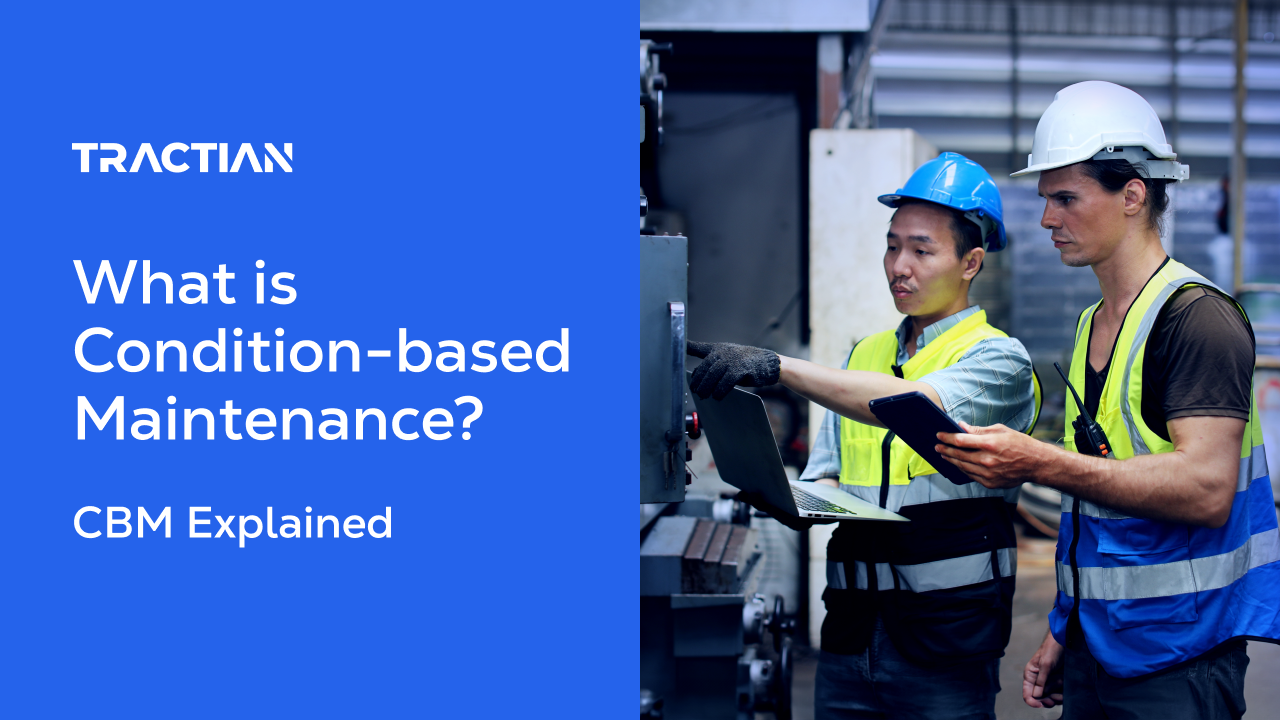Condition-based maintenance (CBM) is a proactive approach where maintenance tasks are performed based on the actual condition of equipment rather than a fixed schedule. By using real-time data, CBM helps detect early signs of wear or potential failure, ensuring that maintenance is done only when necessary.
This method transforms industries by reducing downtime, prolonging equipment lifespan, and optimizing resource use. Instead of reacting to breakdowns or sticking to rigid schedules, CBM allows for smarter, more efficient maintenance planning.
Companies adopting CBM have seen up to a 30% reduction in maintenance costs and a 70% decrease in machine failures. Wouldn't you want to prevent issues before they happen?

This graphic above shows how different maintenance strategies work along the timeline of a machine’s lifecycle. It highlights the journey from predictive maintenance to reactive, and where condition-based maintenance (CBM) fits in.
CBM sits between predictive maintenance and preventive maintenance, acting as a bridge when a potential failure (point "P") has been detected. It relies on real-time data to ensure equipment is serviced before it hits critical conditions, but not too early to waste resources.
If left unchecked, the machine moves into preventive maintenance, and eventually, without intervention, it results in reactive maintenance. The machine has already failed at that stage, leading to costly downtime and repairs. CBM helps avoid this by keeping your assets in check before functional failure (point "F").
CBM or Predictive Maintenance: Which is best?
When comparing CBM and predictive maintenance, both aim to optimize equipment performance but in different ways.
CBM focuses on real-time data, triggering maintenance when conditions indicate it's needed. This ensures timely actions, preventing over-maintenance and minimizing downtime.
Predictive maintenance goes further by using data analytics to predict when failures might occur. By forecasting potential issues, it allows for more strategic planning, reducing unplanned downtime even more. This approach leverages machine learning to make smarter, data-driven decisions.
So, which is better? It depends. CBM is excellent for immediate action, while predictive maintenance offers long-term foresight. Often, combining both approaches delivers the best results-balancing real-time responsiveness with predictive insights.
What are the types of CBM?
Condition-based maintenance relies on different monitoring techniques to assess the health of your equipment in real-time. Each type of CBM focuses on specific conditions to detect early signs of failure, allowing for targeted interventions. Below are the most common types used across industries to enhance asset reliability and prevent costly breakdowns.
Vibration Analysis: Vibration analysis monitors the vibrations of rotating equipment like motors and pumps. Unusual vibrations can indicate misalignment, imbalance, or wear, allowing for early intervention before failure.
Thermography: This method uses infrared cameras to detect temperature changes in equipment. Overheating components often signal electrical or mechanical issues, making thermography a key tool in preventing breakdowns.
Oil Analysis: Oil analysis checks for contaminants and wear particles in lubricants. By assessing the oil’s condition, you can detect internal wear in machines and plan maintenance before severe damage occurs.
Ultrasonic Testing: Ultrasonic sensors detect high-frequency sounds beyond human hearing, often produced by equipment defects or leaks. This allows maintenance teams to catch issues early, such as bearing failures or fluid leaks.
Electrical Testing: Monitoring electrical parameters like insulation resistance and current flow helps identify issues like short circuits or degraded insulation, preventing major electrical failures in machinery.

How to Implement Condition-Based Maintenance (CBM)
Implementing CBM successfully requires a structured approach that aligns with your operational goals. By following these key steps, you can ensure a smooth transition and maximize the benefits of real-time monitoring for your equipment.
- Assess Your Equipment: Start by identifying which assets would benefit most from CBM. Focus on critical machinery where failures cause significant downtime or high repair costs. Not all equipment requires CBM, so prioritize strategically.
- Choose the Right Sensors: Select sensors based on the specific condition you want to monitor, such as vibration, temperature, or oil quality. Ensure the sensors are compatible with your machinery and provide accurate, real-time data.
- Integrate with Monitoring Systems: Connect your sensors to a centralized monitoring system, such as a CMMS (Computerized Maintenance Management System). This allows for seamless data collection and analysis, giving maintenance teams full visibility into asset health.
- Analyze Data in Real-Time: Use the collected data to set condition thresholds. When a parameter exceeds these limits, it triggers an alert for maintenance. Continuous real-time monitoring ensures issues are caught early, preventing costly breakdowns.
- Train Your Team: Equip your maintenance team with the necessary training to interpret CBM data and respond effectively. Ensure they understand how to use the monitoring tools and handle the predictive insights generated by the system.
- Start Small, Then Scale: Begin with a pilot program on a few critical machines. Measure the results, refine the process, and gradually scale up CBM across more assets as you see improvements in efficiency and reduced downtime.

Challenges of Condition-Based Maintenance (CBM)
While condition-based maintenance offers significant advantages, it isn’t without its challenges. Implementing CBM requires thoughtful planning, investment, and ongoing management. If not executed correctly, the system can lead to inefficiencies rather than improvements.
Let’s explore some of the key challenges that companies face when adopting CBM.
High Initial Costs: Implementing CBM requires investment in sensors, monitoring systems, and integration with existing infrastructure. For some companies, this upfront cost can be a barrier.
Complex Data Management: CBM generates large amounts of data that need to be processed and analyzed in real-time. Without proper systems in place, managing and interpreting this data can become overwhelming.
Sensor Calibration and Maintenance: Sensors require regular calibration and maintenance to ensure accuracy. If sensors malfunction or drift out of calibration, it can lead to false readings, resulting in unnecessary maintenance or overlooked issues.
Integration with Existing Systems: Integrating CBM with current maintenance and operational systems can be complex. Ensuring seamless communication between different platforms requires technical expertise and strong IT support.
Skilled Workforce Requirement: CBM demands a team with technical knowledge to interpret data and handle the equipment. Training existing staff or hiring new talent skilled in CBM technologies can pose a challenge for organizations.
Resistance to Change: Implementing CBM may meet resistance from teams accustomed to traditional maintenance methods. Changing established workflows and convincing stakeholders of the long-term benefits can slow down adoption.
How TRACTIAN Can Help Overcome CBM Challenges
Implementing CBM comes with its share of challenges, but TRACTIAN provides solutions that make it easier and more efficient. Here's how our technology can help you overcome common obstacles and unlock the full potential of condition-based maintenance.
- Simplified Data Management: With TRACTIAN’s platform, all condition data is centralized and presented in a user-friendly dashboard. This eliminates the complexity of data interpretation, providing clear, actionable insights that reduce downtime and improve decision-making.
- Reliable Sensors: TRACTIAN’s sensors are designed for long-term reliability with minimal maintenance. Our smart sensors ensure you get accurate readings without constant manual adjustments.
- Seamless Integration: TRACTIAN’s system integrates effortlessly with your existing maintenance workflows. Whether using a CMMS or running standalone, our platform ensures smooth data flow and communication between tools and teams.
- Expert Support and Training: We provide hands-on training and ongoing support to ensure your team is fully equipped to leverage CBM. Whether it's data interpretation or technical troubleshooting, TRACTIAN has you covered with our dedicated support team.
- Change Management Assistance: TRACTIAN simplifies the adoption process with tailored onboarding programs, ensuring your team understands the benefits and is ready to embrace CBM. We help drive a smooth transition, maximizing buy-in across all levels.
Ready to streamline your maintenance processes? Book a demo today to see how TRACTIAN can transform your operation with condition-based maintenance solutions!


